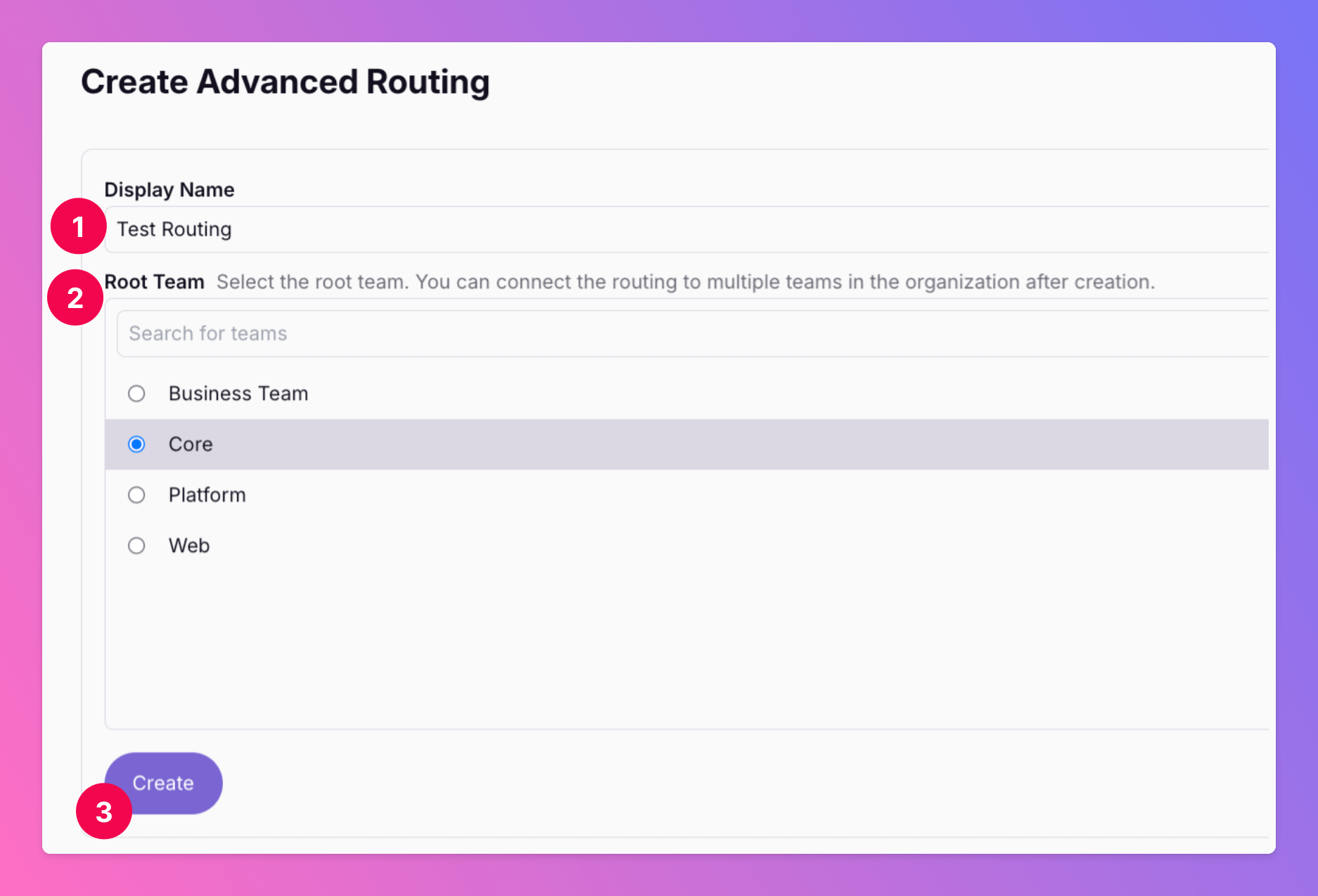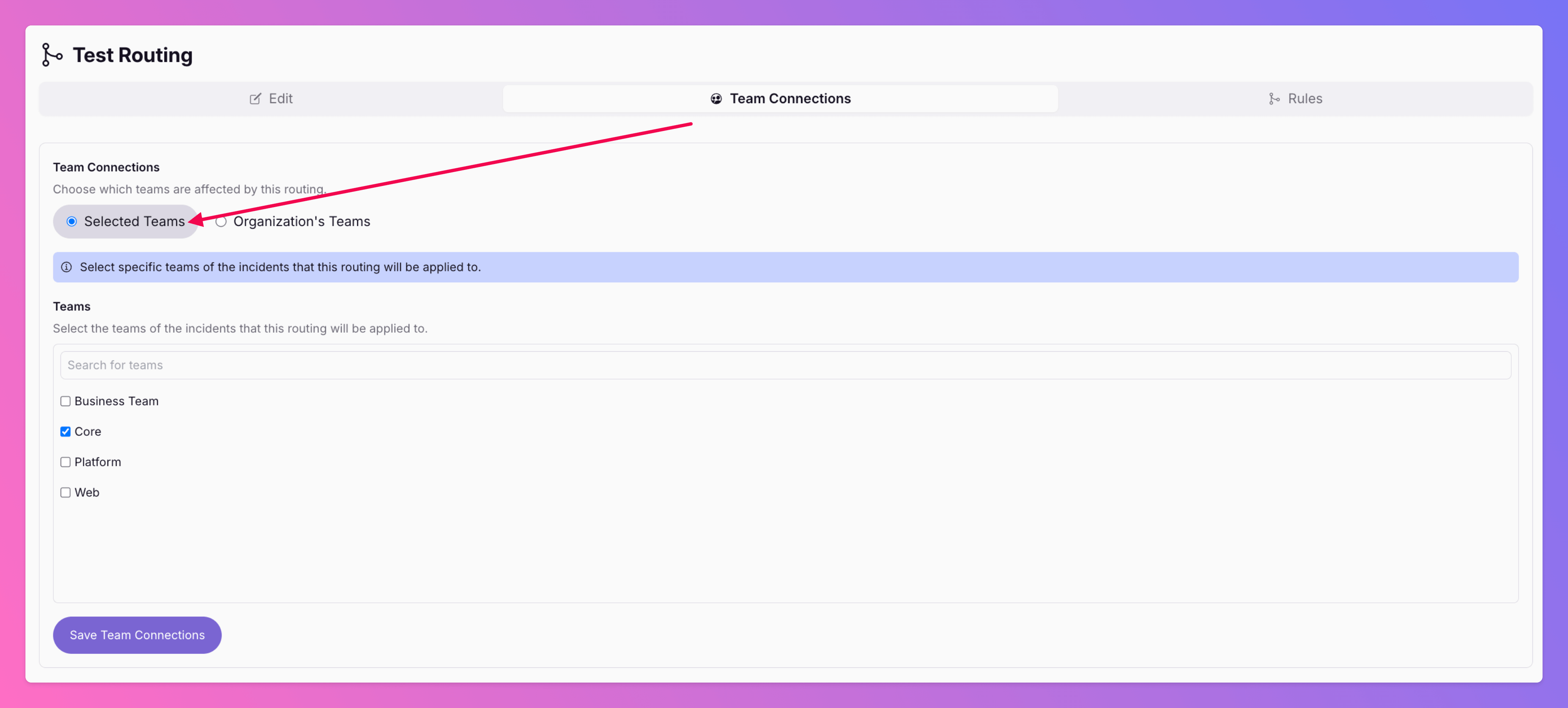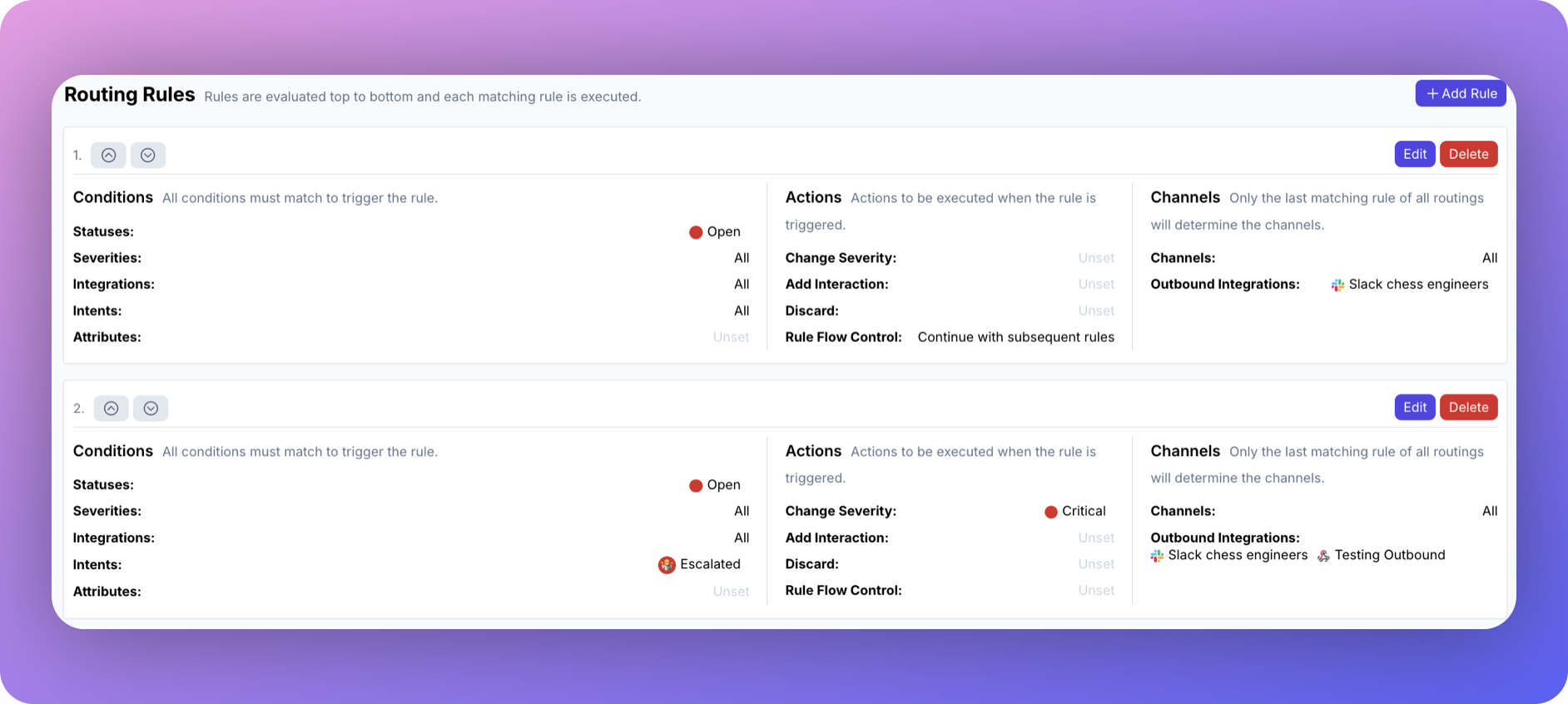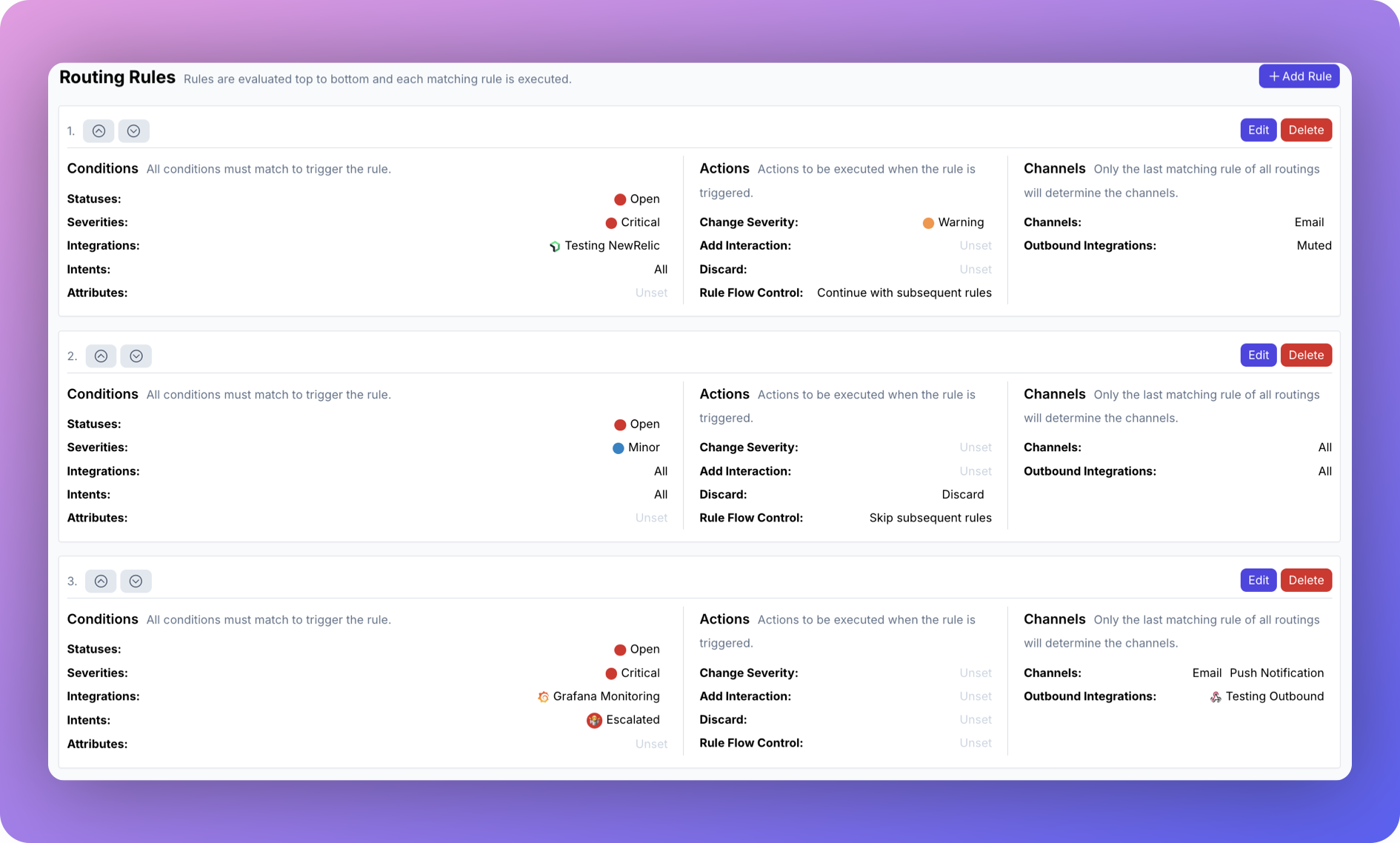- Mute channels when
Environment = "TEST"-> reduce noise for Development/Testing Environments - Trigger an outbound webhook only for incidents that have been escalated
Setting Up Your Advanced Incident Routing
Step 1: Create New Routing
1
Create New Routing
To begin setting up your incident routing, navigate to the 
Advanced Routings section in the sidebar and click on + Create.
2
Name and Create Your Routing
1 Under ‘Display Name’ enter the name for your routing like “My First Routing”.2 Select the Team the routing should be applied to. 3 Click “Create”
Pro and Enterprise plan users: Select the root team of the routing. Later, you may add the routing to further teams within the root team’s organization.

Step 2: Select the Teams
This step is only relevant for Pro and Enterprise plan users. Standard plan users can skip it.
Edit, where you can change the Routings Display NameTeam Connections, where you can manage the connected teams.Rules, where you can add the actuall routings.

Team Connections, you can see that the routing’s root team is pre-selected. You can add the routing to further teams within the root team’s organization. Team Administrators can add / remove those teams they are an admin in, Organization Administrators & Organization Owners can manage the connections to all teams of the organization.

Step 3: Add Rules
Now you can start configuring your Advanced Incident Routing by clicking onAdd Rule and configuring your routing rules.

Define Conditions
Specify the conditions under which your routing rule should trigger. You can configure the following parameters:- Statuses: Choose between
OpenorResolved. - Severities: Select the severity level such as
Minor,Warning, orCritical. - Integrations: Pick the integrated tools that should trigger the rule.
- Services: Pick the affected services that should trigger the rule.Only for users of status pages.
- Intents: Filter by the incident’s current state, like
resolved,escalated, etc. - Attributes: Select the attributes that will trigger this rule. Depending on your selection, the incident’s attributes will be matched using all (AND logic) or any (OR logic) of your selected attributes. Choose from different operators, like
=,contrains,>and<=to build rules based your attributes’ values. - Apply only during these times and days: You can add specific weekdays and daytimes for the routing rule to be active.
- Apply only once during: You can add a specific range in time for the routing rule to be active only once.
Configure Actions
Once the conditions are met, define the actions to be executed:- Assign to Teams: Directs the incident to specified teams. Selecting this option replaces the original incident’s team assignment. To retain the original team alongside new assignments, explicitly include it in the selection. Learn more about this incident action here. This feature is only available if the routing’s team is associated with an organization. Organizations are available on Pro and Enterprise plans.
- Change Severity: Update the incident’s severity level.
- Add Interaction: Insert an interaction, such as a comment or status update.
- Affects Services: Select the affected Service(s).Only if
Affectswas selected as Interaction
- Affects Services:
- Add/Set Attributes: Add attributes to the incident or adjust the value of an attribute under certain conditions. You can also do this in the payload mapping section of each inbound integration.
- Discard: Choose to discard the incident if it meets certain criteria.
- Rule Flow Control: Decide whether to continue with subsequent rules or not.
- Delay Actions (min.): Decide whether to delay the defined actions by a certain number of minutes or not.
Choose Channels
Determine how notifications are sent out by configuring channels:- Mute all Channels: Silence notifications across all channels (not including outbound integrations, see below).
- Channels: Select only specific channels (SMS, Email, Voice Call, Push Notification) that should be triggered when conditions are met, e.g. you can define that only for the conditions you set an SMS is sent.
- Mute all Integrations: Silence notifications across all outbound integration.
- Outbound Integrations: Select only specific outbound integrations that should be triggered when conditions are met, e.g. you can define that only for the conditions you set a generic outbound is triggered.
Examples
Here are two examples of how teams are setting up Advanced Incident Routing with All QuietUse Case 1: Mute channels when Environment = TEST
Use Case 1: Mute channels when Environment = TEST
In this example:
- The conditions are
- status is
open - severity is
critical - The attribute condition is: Attribute
Environment=Test.
- status is
- Actions are
- Change severity to
Warning
- Change severity to
- Channels chosen are
- Only
Emailchannel is chosen - All outbound integrations are
muted
- Only

Use Case 2: Trigger Generic Outbound for escalated incidents
Use Case 2: Trigger Generic Outbound for escalated incidents
In this example we set two rules in order to only trigger our webhook outbound integration for incidents that have been escalated.Our first rule:
- Condition is that an incident is
open - For Channels we select only our Slack integration and not our Webhook integration
- We select
Continue with subsequent rules
- Condition is that incidents are
open&escalated - Action is that we change the severity to
Critical - We now select both our Slack integration and our Webhook outbound integration
Critical and we will trigger our outbound webhook integration.
Step 4: Finalize Your Incident Routing
You can add multiple rules and connect them with eitherContinue with subsequent rules or Skip subsequent rules. Rules are evaluated top to bottom and each matching rule is executed once per incident. You can edit or delete individual rules and reorder the rules you have defined to create custom workflows and make All Quiet work for your team.
